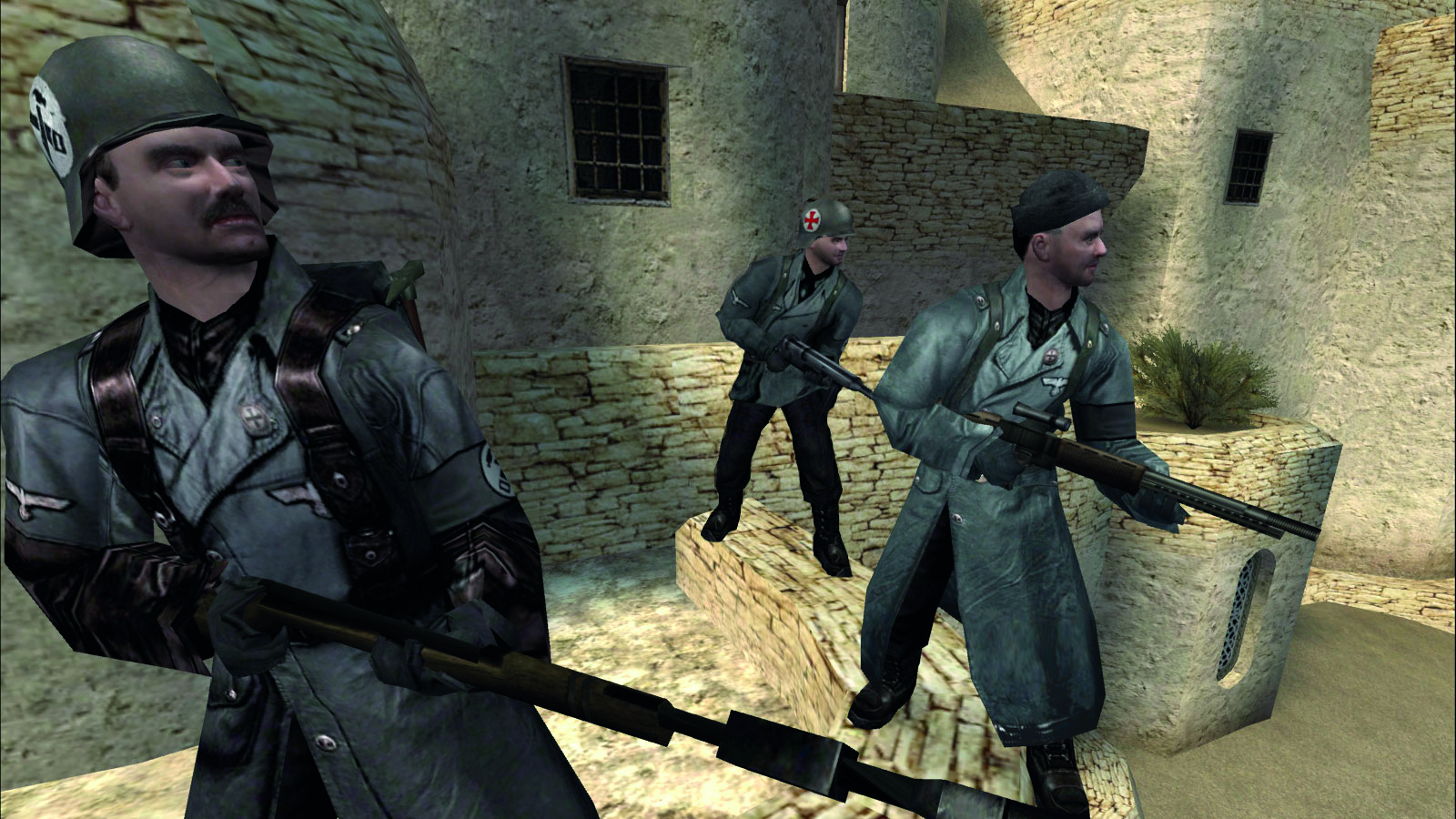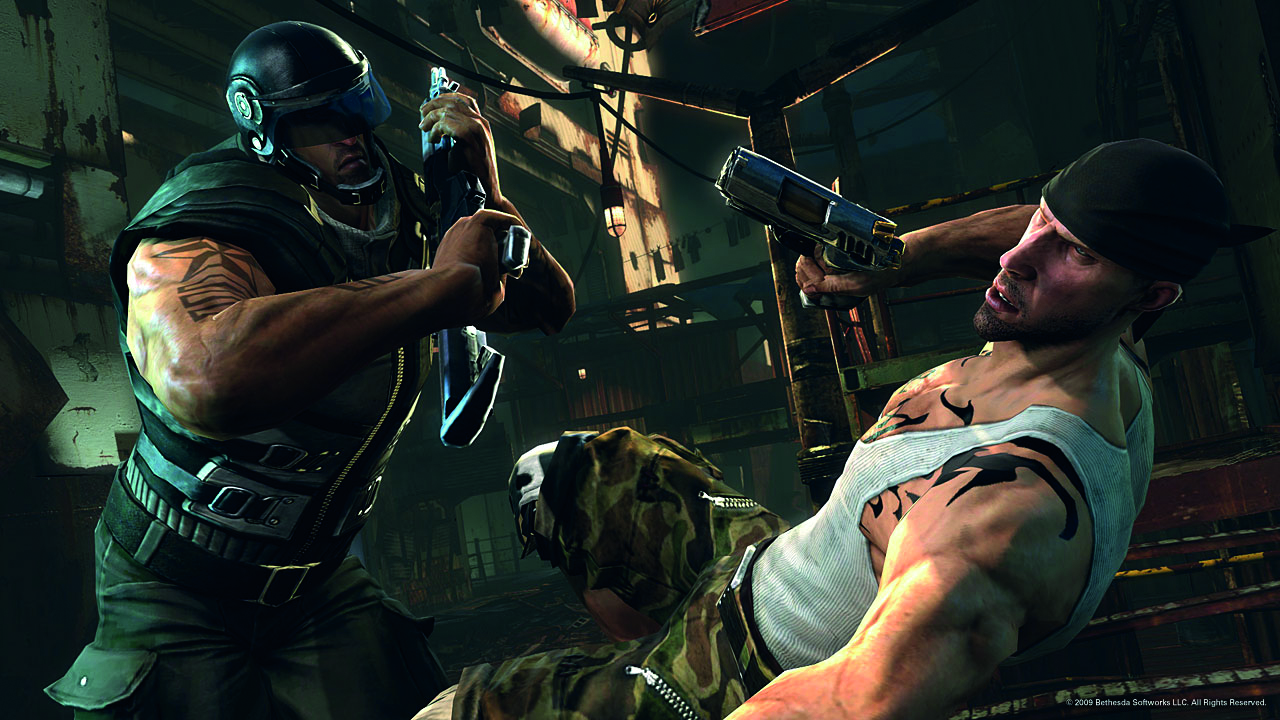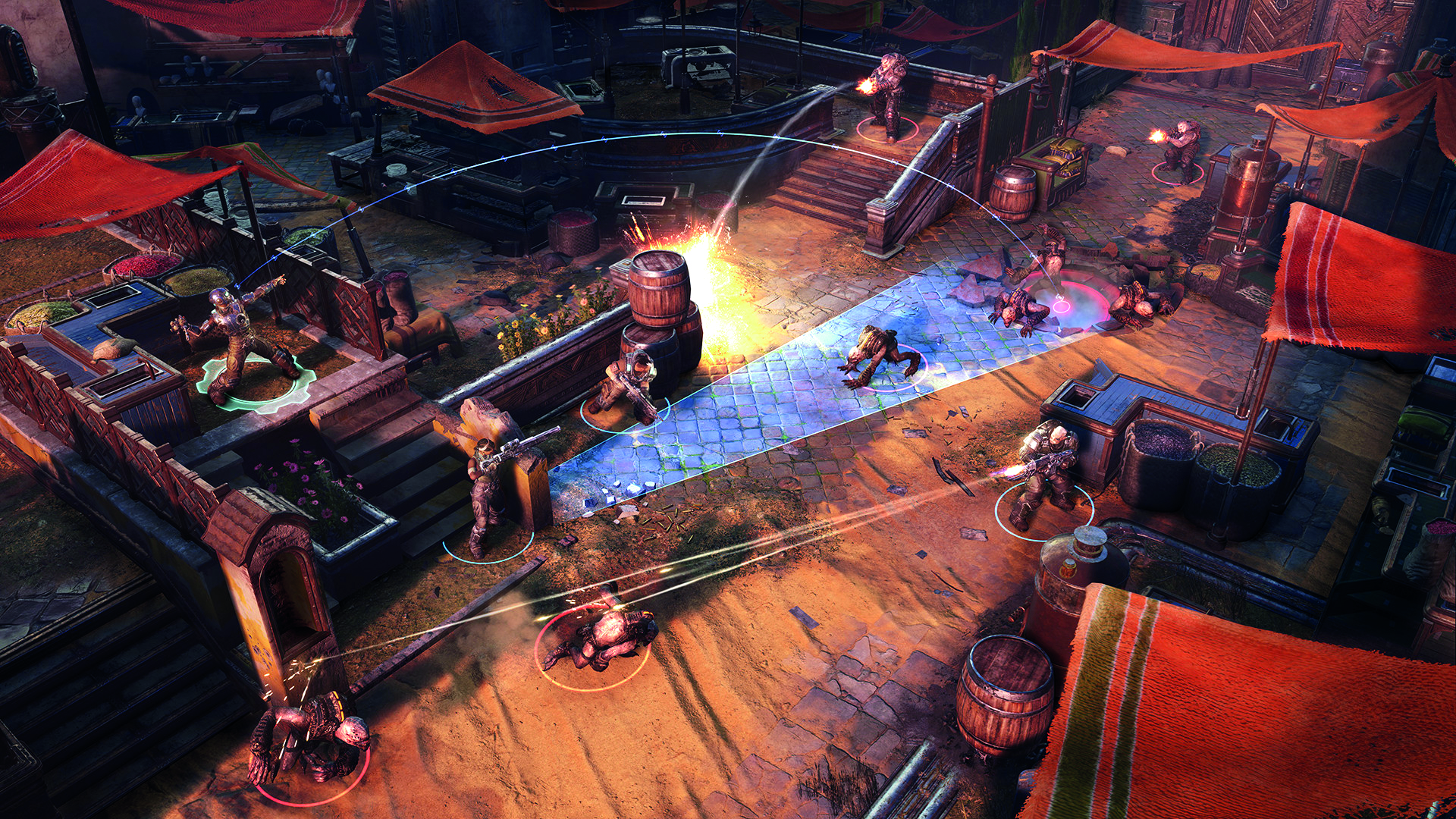How FPS masters and Gears Tactics studio Splash Damage went from team-based to turn-based

This article first appeared in PC Gamer magazine issue 359 in July 2021, as part of our 'DNA Tracing' series, where every month we delve into the lineages behind iconic games and studios.
Sniper, soldier, medic, engineer: the characters in Splash Damage games are specialists who know one thing, and know it well. For almost 20 years, that was true for the studio too—a team of former modders who became trusted by players and publishers alike for their singular dedication to the art of class-based multiplayer shooting. But lately, that narrow focus hasn’t served Splash Damage as well as it once did. The company has instead survived by doing something that was never possible in the first-person shooters of old: multi-classing.
It wouldn’t be accurate to say that the nascent Splash Damage developed the first-ever class-based FPS—Robin Walker and his future Valve colleagues had invented the Pyro and Spy by 1999 for Quake’s Team Fortress mod. But Splash Damage came from the same milieu, using a souped-up version of id Software’s engine to create the popular Quake 3 Fortress. If you played the Recon class, you got to be quick on your feet, carry a nailgun, and throw stun grenades. Or you could pick the Flametrooper, who was slower but sturdier and packing napalm. Only by compensating for each others’ weaknesses and working together to capture objectives could teams triumph.
It was an ambitious departure from the vanilla Quake games, which had offered only the symmetrical challenge of the FPS arena. This new idea suggested something more tactical and varied lay just beyond the horizon—if only the games industry could catch up with the modders.
On the brink
Like so many significant shooter developers of the past two decades, Splash Damage found itself slingshotted into the big leagues by id Software’s orbit. After making fan favourite maps for Return to Castle Wolfenstein, the studio was commissioned to build Enemy Territory, a standalone spin-off that brought its trademark teamplay to BJ Blazkowicz’s backyard. Unusually for the time, Enemy Territory was free—becoming a fixture of magazine cover discs and a quintessential PC gaming experience of the period.

Splash Damage went on to adapt the Enemy Territory concept for Quake 4, and worked on Doom 3’s multiplayer—testament to the respect it had earned from the FPS genre’s progenitors. But the studio made a bold bid for independence from id’s properties with Brink, a game that proved fatally ahead of its time.
Revealed just months after Mirror’s Edge was released in 2009, Brink’s debut trailer showed multiplayer FPS avatars moving in ways they never had before—vaulting over cover, running along walls, and landing smoothly in forward rolls, retaining momentum as they advanced on the enemy. Without compromising on its commitment to class-based combat and objective-driven design, Splash Damage incorporated parkour into the flow of its maps. It advised that, as a rule, players should be moving more often than they were shooting.
Played in 2021, the parkour feels somewhat sticky, as if your character had magnets glued to their palms. But if Brink’s implementation feels dated, that’s because its innovations have been seized on by the games industry at large. Titanfall took verticality further in 2014, and Doom introduced mantling a couple of years later. Even Call of Duty embraced wallrunning during its sci-fi phase, and the legacy of all these movement mechanics can still be felt in Apex Legends and Warzone. Brink wasn’t met by millions of players on release, the way its descendants have been—but Splash Damage and Bethesda were certainly vindicated for investing in its concept.
Cockney crime
Perhaps the mistake was to push the boundaries on too many fronts. Brink also saw Splash Damage establish an appetite for worldbuilding, positing that a multiplayer shooter was perfectly capable of hosting a story—so long as it hinged on a conflict between two factions. The Brink universe was a climate change parable in which rising oceans had confined humanity to a single Ark city, where the survivors fought either for order or freedom. Matches were bookended by cutscenes, and together formed a single-player style campaign for whichever side you chose to represent.

Brink’s follow-up, Dirty Bomb, featured a similarly high concept. Set in Splash Damage’s hometown of London, it recreated recognisable chunks of the capital in the aftermath of a mass evacuation. Either you were working to cover up the radiation incident as a mercenary for the Central Disaster Authority, or stealing the CDA’s tech for a cockney criminal syndicate called the Jackal.
A capitulation to the mainstream, and painfully, it didn't work
Yet, despite this cornucopia of personality, Splash Damage seemed to undergo a crisis of confidence during Dirty Bomb’s development. The game’s name was changed to the less-characterful Extraction, and then switched back again. Brink’s parkour was reduced to a simple, wall-kicking double jump. And the purity of Enemy Territory’s class system was diluted, so that any role could tackle an engineer’s objectives—reducing the need for team cooperation.
It was a capitulation to the mainstream, and painfully, it didn’t work. Half a decade on, Dirty Bomb pulls in just a smattering of players on Steam each day – while Overwatch draws crowds with the payload objectives and distinct player roles that first won Splash Damage acclaim.
About turn

The studio remains a respected multiplayer-for-hire developer, working on Batman: Arkham Origins and the last two Gears shooters. But these online components of solo games have short shelf lives, with support and servers expectedly dwindling a few years after launch. Salvation has come instead from a surprising quarter – the studio’s experiments with turn-based tactics. The promise of the mobile-first RAD Soldiers, a Splash Damage side project from 2012, came to full fruition in last year’s Gears Tactics.
A respectable competitor to XCOM, Gears Tactics captures the aggressive spirit of shooters in a traditionally polite genre. Offence is the smartest defence: executing Grubs grants your units extra moves, and there’s a knack to chaining kills so that turns extend way beyond their natural lifespan. As in Enemy Territory, each unit is highly specialised. Best of all, Gears Tactics’ ballistic modelling ensures that stray bullets catch unintended targets, muddying the ruleset with thrilling unpredictability. In other words, it’s a true Splash Damage game. Once an FPS developer, always an FPS developer.











No comments: